The Battle of Dien Bien Phu is seen as the decisive battle of the First Indochina War between French troops and the Viet Minh movement of Ho Chi Minh. This major confrontation occurred at Dien Bien Phu, a large heart-shaped valley located in the northwestern part of Vietnam, near the border with Laos. The valley served as a French forward operating base to conduct operations in the region. The main purposes of the operations there were to cut off Viet Minh supply lines into Laos, a former member of French Indochina and an ally of France, and to successfully defeat the enemy. However, the French garrison attracted the Viet Minh.
Despite their plans, the French were attacked and suffered a defeat. The leadership of the garrison absolutely failed, as well as the French leadership in Vietnam and France. The units stationed in the valley had to fight on their own, pitting some 6,000 reliable French troops (many African troops or Vietnamese auxiliaries preferred desertion to fighting) against more than 55,000 Viet Minh soldiers. The battle started on March 13, 1954 and was over 56 days later, on May 7. One of the Legion units had to fight until May 8. The battle culminated in French withdrawal from Southeast Asia after almost 100 years.

Dien Bien Phu: November 1953 – March 1954
1946: First Indochina War started
French Indochina. The title refers to French colonial territories in Southeast Asia: today’s Vietnam, Cambodia, and Laos. These countries had been under French rule since the 1880s, with the important help of legionnaires. This rule was temporarily interrupted in March 1945, when French Indochina faced the Japanese occupation.
In late 1945, with the defeat of the Japanese Empire, the first French troops were installed back in Indochina, now partially occupied by the Viet Minh (League for the Independence of Vietnam), a nationalist, communist-led movement led by Ho Chi Minh. The latter declared independence from France for Vietnam in September 1945. A formal agreement between the French government and the movement ended in December 1946, when the Viet Minh launched a general attack aimed at French garrisons. The First Indochina War started.
1953: Decision to seize Dien Bien Phu
In late 1952, during a Viet Minh offensive targeting Laos, a French entrenched camp situated in a valley was placed in the path of the advancing enemy in the mountainous zone of Tonkin (what is today Northern Vietnam). Underestimating the strength of the French garrison and expecting easy prey, the Viet Minh divisions encircled the camp and attacked it. The lesser known Battle of Na San became an unequivocal French victory.
Nevertheless, in the first half of 1953, a new French HQ command in Indochina decided to fully abandon the well-fortified camp at Na San and occupy a much larger and harder to defend valley instead: that of Dien Bien Phu.
Dien Bien Phu is a large valley in northwestern Vietnam, which at the time was named after a small town situated there. Today, the place is called Muong Thanh Valley. It is 12.5 miles (20 km) long and 3.5 miles (6 km) wide and located close to the border with Laos. A former member of French Indochina, Laos became independent in October 1953, but remained a French ally. Right after gaining its independence, it was attacked by the Viet Minh.
Northwestern Vietnam is a wild, mountainous region, and was then the most important and strategic area for the Viet Minh. The remote region served as a rear base for the movement, used for attacking Laos. Numerous Viet Minh transit and supply roads crossed the region, and many Viet Minh training camps were based there too. It also bordered with China, the sponsor of the Viet Minh.
Meanwhile, the French considered the valley the most strategic place to conduct operations along the border with Laos, carried out by so-called Mobile Groups, which were regiment-size task forces. The valley was to serve as their well-entrenched forward operating base. The main task was to cut off the enemy supply lines between China and Laos, and thereafter, to defeat the Viet Minh.

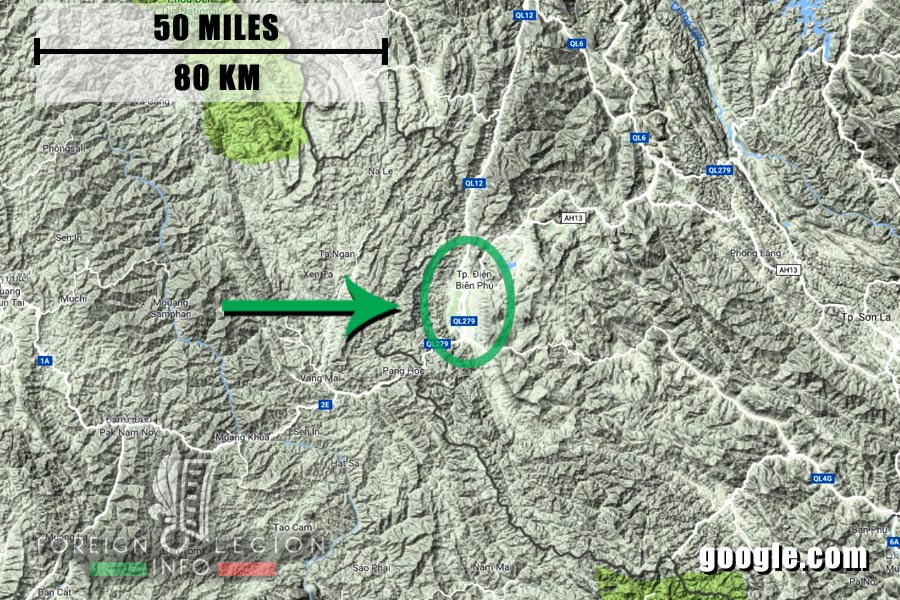

November 20 – 22, 1953: Operation Castor
On November 20, 1953, the French launched Operation Castor, the largest airborne operation of the First Indochina War, as well as the largest airborne operation since WWII. It was conducted to seize and secure the valley and to repair an old Japanese airstrip and make it usable. Two French Airborne Groups (GAP) jumped over Dien Bien Phu, as well as six French airborne battalions, an artillery battery, a heavy mortar company, and an engineer company.
With them were paratroopers from the Foreign Legion: the 1st Foreign Parachute Battalion (1er BEP) under Major Guiraud, and the 1st Heavy Mortar Foreign Parachute Company (1re CEPML) under Lieutenant Molinier. Both units jumped over Dien Bien Phu on November 21.
After the landing, over 100 Viet Minh rebels were killed in the ensuing clashes.
November 23 – December 15, 1953: Operation Pollux
The French side next undertook Operation Pollux, an operation to re-group French units and clear the sector of the Viet Minh elements. During the operation, 28 legionnaires were found to be killed or missing.
December 1953 – January 1954: Reinforcements
Between December 8 and 20, other French units landed at Dien Bien Phu, including units from the Foreign Legion. These were the 1st Battalion 13e DBLE (Foreign Legion Demi-Brigade), led by Major Brinon; the HQ of the 13e DBLE, commanded by Lieutenant Colonel Gaucher; the 3rd Battalion 13e DBLE, led by Major Pégot; a platoon of the 2e CREBLE, led by Lieutenant Bugeat; and the 2nd Platoon 5e CMRLE under Lieutenant Jourdonneau.
The 2e CREBLE platoon would assemble ten M24 Chaffee light tanks, belonging to a squadron of the 1er RCC (French cavalry regiment), and then leave Dien Bien Phu in mid-January 1954.
The 2nd Platoon of the 5th Foreign Legion Medium Repair Company would maintain the vehicles and tanks used in the valley. Later, it would also act as an armored mobile platoon, using trucks equipped with machine guns during military operations.
The reinforcements also included a 3e RTA battalion of Algerian infantrymen, a Tai battalion (BT2), and two Tai auxiliary companies. The Tai units were formed by local partisan volunteers, mainly White Tai (Tai Don) and Black Tai (Tai Dam) people. They were members of the Tai Federation, an autonomous confederation of Tai people in northwestern Vietnam. The Tai are one of the 54 (fifty-four) ethnic groups living in Vietnam. As anti-communist elements, a number of them emigrated to Laos in late 1954. They were resettled to Iowa, USA in 1975.
In late December, 1er BEP legionnaires and a French airborne battalion were involved in Operation Regates, a reconnaissance between Dien Bien Phu and Laos.
From December 29 to January 10, 1954, new reinforcements arrived as French troops and auxiliaries continued to land at Dien Bien Phu. Among them were other units from the Foreign Legion: the 1st Battalion 2e REI (Foreign Infantry), led by Major Clémencon; the 3rd Battalion 3e REI under Major Grand d’Esnon; the HQ of the 3e REI, commanded by Lieutenant Colonel Lalande; and Lieutenant Fetter’s 2e CMMLE (Legion Mortar Mixed Company).

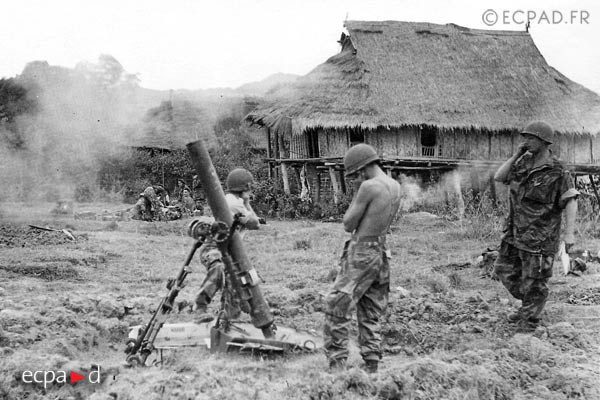
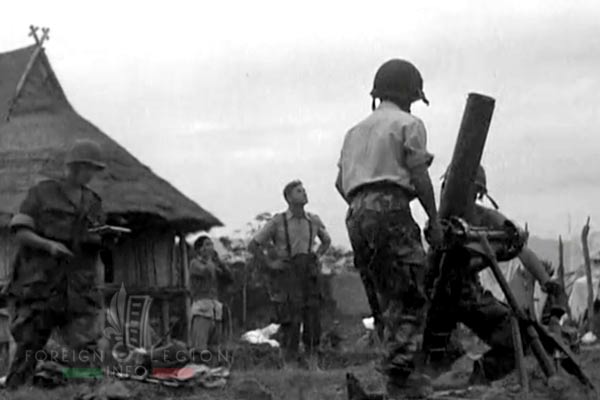

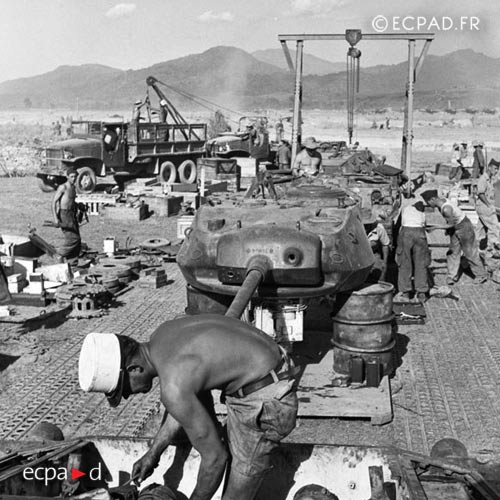

January – February 1954: Preparations
At the end of December, Dien Bien Phu was encircled by the Viet Minh, who brought three infantry divisions and an artillery division, some 45,000 men, plus thousands of logistics personnel. The divisions, led by General Vo Nguyen Giap, were placed on the hills surrounding the valley.
On January 12, 1954, legionnaires from the 1er BEP got involved in heavy clashes with the Viet Minh. Five legionnaires were killed that day, and 33 wounded.
During the first months of 1954, the French defenders transformed the Dien Bien Phu Valley into a fortress, with several independent battle positions (strongpoints) defending the valley.
By now, the majority of the original French paratroopers had left the site. Only three units remained at Dien Bien Phu in January 1954: 1er BEP, 1re CEPML and 8e BPC.
In February, the Viet Minh artillery began shelling French positions at Dien Bien Phu at regular intervals.
In mid-February, legionnaires from the 3e REI and 13e DBLE were involved in heavy clashes with the Viet Minh near Isabelle, the southernmost French defensive position in the valley. Lieutenant Michel and 12 legionnaires were killed, while over 70 legionnaires were wounded.
A few days later, on February 19, French Minister of Defense Pleven visited the French troops in the valley and decorated several men and units, among them, the 1er BEP. For its actions in French Indochina, the 1er BEP was awarded the Fourragère in yellow and green colors of the Military Medal.
In early March, another Foreign Legion unit landed at Dien Bien Phu: the 1re CMMLE, a mixed mortar company led by Lieutenant Poirier.
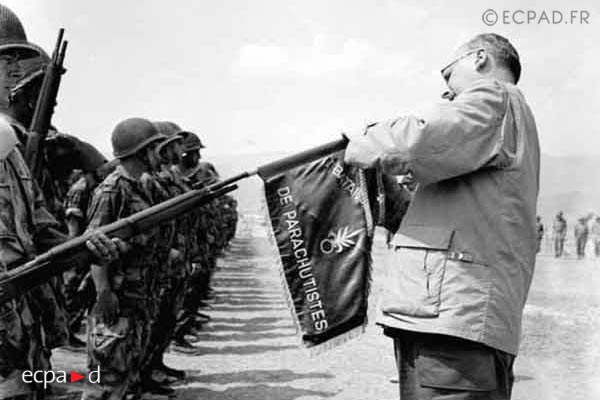
March 12, 1954: Dien Bien Phu organization
By this point, France had roughly 6,500 infantry troops at Dien Bien Phu. They included two airborne infantry and 10 foot infantry battalions, with about 2,750 legionnaires (5 bns) among them. At the time, a French battalion had some 450-650 men, often not more than 550 men for lack of volunteers. There have sometimes been attempts made by some high-ranking officials, as well as by historians and writers, to use theoretical numbers (ca. 850 men).
In addition to infantry, the French side had several hundred artillery personnel, with about 350 Legion artillerymen (3 coys) among them, and several hundred logistics personnel. Moreover, they had tens of armored cavalry elements (10 tanks).
The Airborne Group was composed of all airborne units (excl. artillery), and commanded by Lieutenant Colonel Langlais. The paratroopers would become the leading element of the French garrison, and Langlais the unofficial commander of the Dien Bien Phu garrison. In the field, it was Major Bigeard (6e BPC) who led the paratroopers.
The Artillery was composed of all artillery units (including the airborne 1re CEPML) and commanded by Colonel Piroth (later replaced by Lieutenant Colonel Robin).
The entire French garrison of Dien Bien Phu was designated the North-West Operational Group (GONO). A French cavalry officer, Colonel Christian de Castries, took command of the GONO. However, his leadership would be seen as very poor.
The GONO consisted of several independent defensive positions (strongpoints) which were set up there and assigned French female names in alphabetical order. The strongpoints, strongly fortified and heavily armed with automatic weapons, were usually composed of additional fortified positions, grouped for their protection.
The French strongpoints at Dien Bien Phu in March 1954 were:
- Anne-Marie (held by auxiliaries from the BT3 Tai battalion and a platoon of legionnaires from the 2e CMMLE)
- Beatrice (held by the 3rd Battalion, 13e DBLE)
- Claudine and Epervier (the GONO HQ and a field hospital, defended by 1er BEP, 1st Battalion 13e DBLE, 1re CMMLE, 8e BPC, and artillery)
- Dominique (held by a 3e RTA Algerian battalion, a Tai battalion BT2, and legionnaires from the 1re CEPML)
- Eliane (held by a 4e RTM Moroccan battalion)
- Francoise (held by a platoon of Tai auxiliaries from the BT2)
- Gabrielle (held by a 7e RTA Algerian battalion and a 2e CMMLE platoon)
- Huguette (held by the 1st Battalion, 2e REI)
- Isabelle (held by the 3rd Battalion, 3e REI, a 1er RTA Algerian battalion, two artillery batteries, and the M24 tank platoon)
The GONO itself was divided into three parts: the Northern, Central, and Southern Sectors.
The Northern Sector was composed of two strongpoints, Anne-Marie and Gabrielle, and was commanded by Lieutenant Colonel Trancart.
The Central Sector was composed of five strongpoints: Béatrice, Claudine, Dominique, Eliane, and Huguette. It was commanded by Lieutenant Colonel Gaucher from the 13e DBLE.
The Southern Sector was composed of a single, isolated strongpoint, Isabelle, with an auxiliary airstrip nearby. The strongpoint became completely independent a few weeks later. The Southern Sector was commanded by Lieutenant Colonel Lalande from the 3e REI.
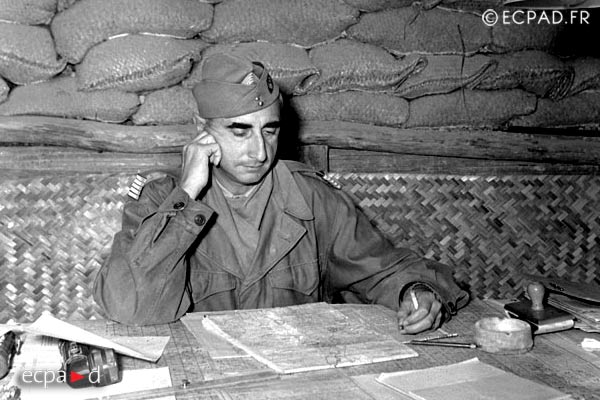
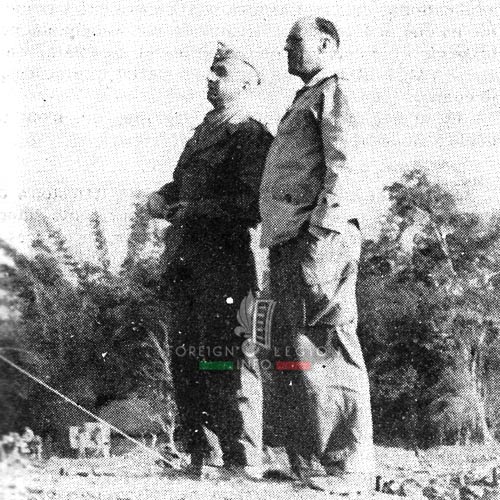
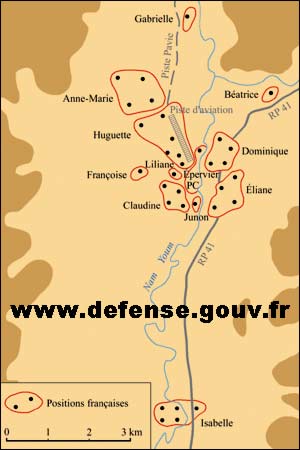

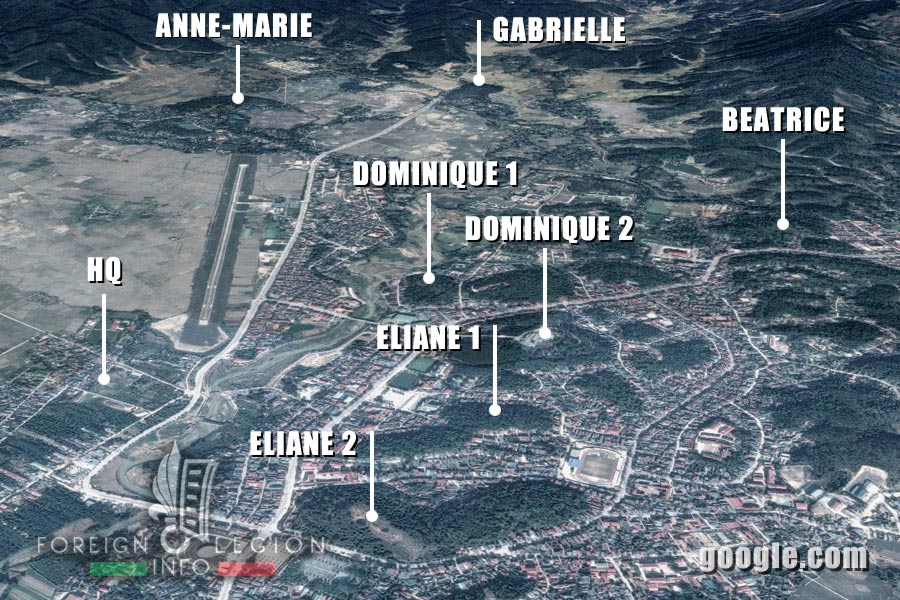
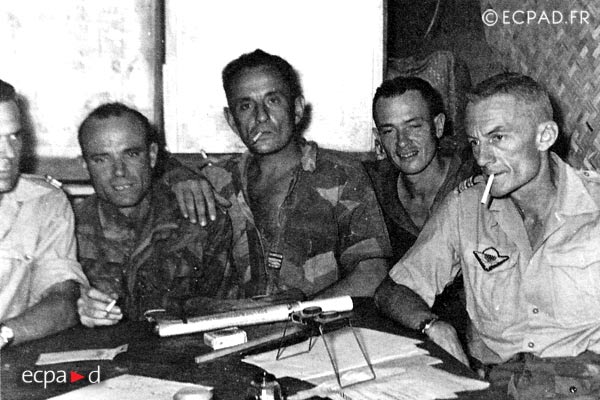
Battle of Dien Bien Phu: First Offensive
March 13, 1954: Loss of Beatrice
In the afternoon of March 13, the Viet Minh under General Giap launched their first offensive on Dien Bien Phu, conducted from the north with shelling aimed at Gabrielle (a false attack), and from the northeast with an attack on Beatrice. The battle officially began at 05:30 PM (17:30).
Attack on Beatrice. The Viet Minh’s offensive started with an attack on Beatrice, the easternmost French strongpoint, which was built on two hills and composed of three smaller defensive positions (known as Beatrice 1, 2, and 3). These positions were held by legionnaires from the 3rd Battalion, 13e DBLE. The attack started with heavy shelling of Beatrice, which lasted for two hours before the Viet Minh launched a massive infantry assault, carried out by the Regiments 141 and 209 of the Division 312 (about 12,000 men, including a reserve regiment, the 165th).
A platoon of the 2e CMMLE, as well as one of the 1re CEPML, supported the 13e DBLE with mortar fire. The CEPML platoon, under Lt. Bergot, suffered several men killed.
Lieutenant Colonel Jules Gaucher killed. That evening, Lt. Colonel Jules Gaucher, commander of the 13e DBLE and the Central Sector, was also killed. The sad event occurred when a Viet Minh mortar shell penetrated into his bunker while he was commanding his men at Beatrice by radio. The commanding officer was badly wounded, and died of his injuries a few hours later. The place of his death is noted as Gabrielle, the northernmost defensive position, where his bunker was located. Lt. Col. Gaucher was the second commander of the 13e DBLE killed in Indochina, after Lt. Col. Brunet de Sairigné. His unexpected death affected the destiny of Beatrice and, probably, the destiny of the entire battle at Dien Bien Phu.
Loss of Beatrice. In the early morning, Beatrice was lost. Its HQ and positions were destroyed, and it was seized by the Viet Minh. The 3rd Battalion 13e DBLE suffered heavy casualties, and Major Pégot, the battalion commander, was killed. His deputy, Captain Pardi, was also killed, and about 300 officers and legionnaires of the battalion were killed or imprisoned. Less than 200 officers and legionnaires survived the attack. They were evacuated from the sector to the HQ of Dien Bien Phu. Later these men would reinforce Huguette, the strongpoint held by their comrades from the 1st Battalion 13e DBLE. Legionnaires from the 1st Battalion 2e REI were also stationed there.
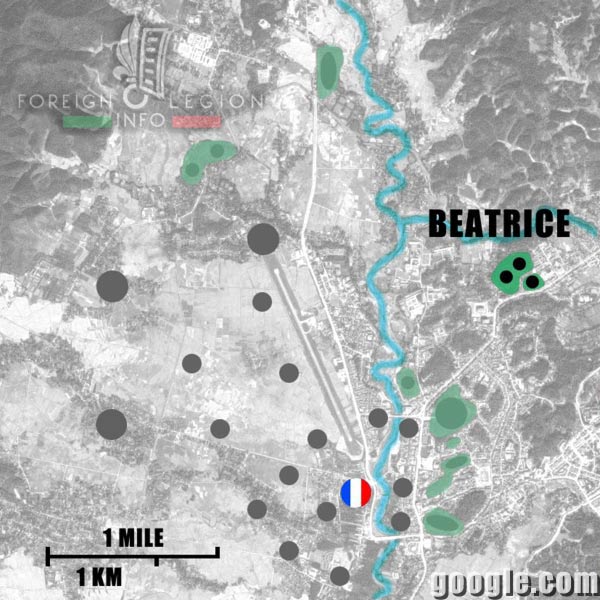

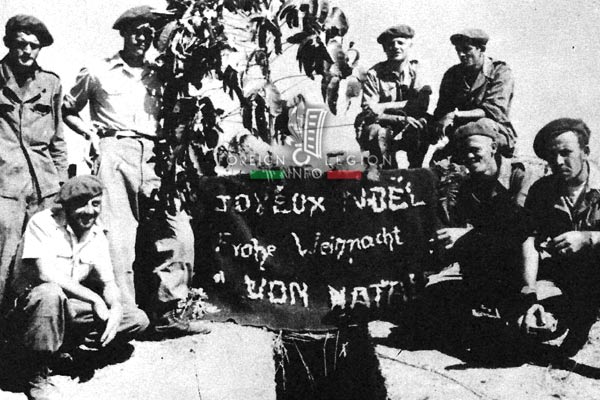
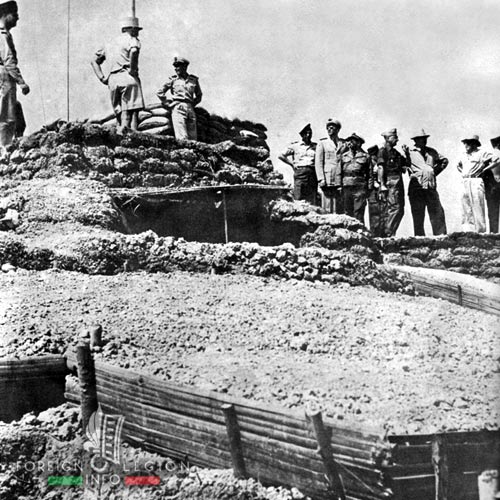

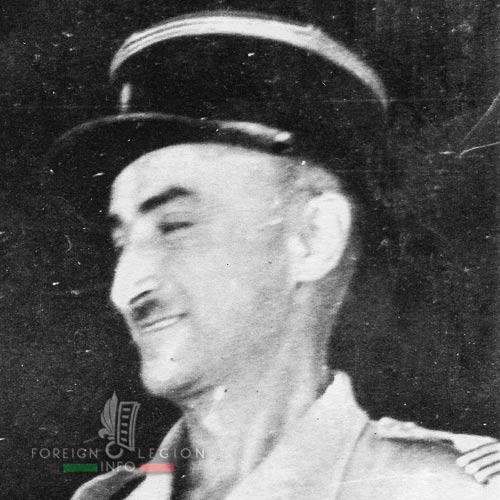
March 14-15, 1954: Loss of Gabrielle
On March 14, a pro-French Vietnamese parachute battalion was dropped into Dien Bien Phu. The 5e BPVN, composed of local anti-communist auxiliaries, was led by Captain Botella. The unit reinforced the French camp.
Attack on Gabrielle. In the afternoon, Gabrielle was attacked by the Viet Minh’s Division 308 (Regiments 88 and 102). The northernmost strongpoint of Dien Bien Phu, it was 2.5 miles (4 km) distant from the French HQ, and held by an Algerian battalion (V/7e RTA) under Major Mecquenem. His men were, for the most part, seasoned warriors who had participated in the 1943-44 Italian Campaign. They were supported by a platoon of the 2e CMMLE, led by Lieutenant Clerget. The heavy fighting took all that night.
Gabrielle was also supported by the 1st Platoon, 1re CEPML under Lieutenant Paul Turcy. The platoon was posted at Claudine, a strongpoint near the French HQ. There, it came under Viet Minh shelling; Lieutenant Turcy was killed.
In the early morning, a French counter-attack was organized. The 5e BPVN and two 1er BEP companies, supported by M24 tanks, were sent to help defend Gabrielle. However, the counter-attack wasn’t successful. The two enemy regiments, considerably depleted, were relieved by Regiments 36 and 141 which then resumed the assault. Finally, Gabrielle was abandoned and seized by the Viet Minh. The northernmost defensive position was lost.
Only a few Algerians and 2e CMMLE legionnaires survived this fight. The rest of the defenders were killed or imprisoned, as Lieutenant Clerget was. The 2e CMMLE survivors joined their company at Anne-Marie. The 1er BEP companies withdrew with 9 men killed and 46 men wounded.
During the attacks on Beatrice and Gabrielle, where two French battalions were attacked by two enemy divisions, the Viet Minh also lost many men. At least 2,500 of them are estimated to have been killed, and around 7,000 wounded.
Suicide of Lieutenant Colonel Charles Piroth. Also that day, the commander of the French artillery at Dien Bien Phu, Lt. Col. Piroth, killed himself. He saw the rapid fall of French defensive positions as the fault of his artillery, and assumed personal responsibility by committing suicide. In 1946, as a major, he had been badly wounded near Saigon and allowed his arm to be amputated without anesthesia.
March 15 is seen as the day the French lost the battle of Dien Bien Phu.

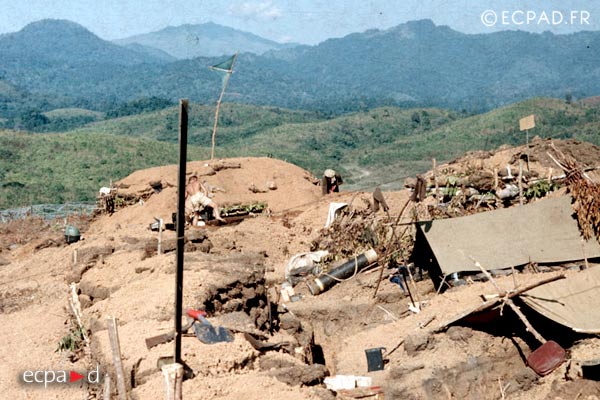
March 16, 1954: Loss of Anne-Marie
After the fall of Beatrice and Gabrielle, the most threatened strongpoint was Anne-Marie, which was composed of four fortified positions and occupied by a Tai battalion (BT3) and 2e CMMLE legionnaires. During the night, the Tai auxiliaries deserted their positions. Scared by a possible Viet Minh attack, they disappeared in the jungle, and the 2e CMMLE was left alone at Anne-Marie.
As a result, the legionnaires were sent to Claudine (near the French HQ) and Anne-Marie was abolished. Its two less outlying defensive positions (3 and 4) were renamed and became Huguette 6 and Huguette 7.
In the afternoon, new reinforcements jumped over Dien Bien Phu: the 6e BPC, a French colonial parachute battalion led by Major Bigeard. In November, during Operation Castor, the same battalion was the very first unit to jump over the valley.
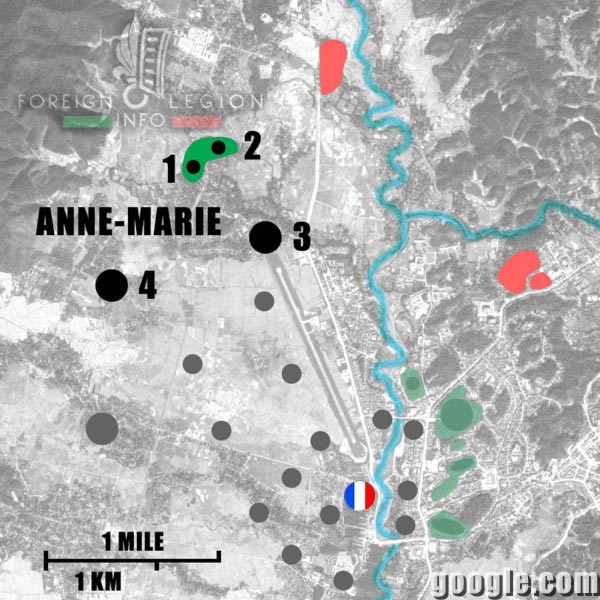
March 17-29, 1954: Waiting
Lieutenant Colonel Maurice Lemeunier arrived at the same time to replace Lieutenant Colonel Gaucher as the new commanding officer of the 13e DBLE. A French officer who had served in the Legion since 1934, he voluntarily jumped over Dien Bien Phu on March 19. He would also take command of the Central Sector.
The next day, wounded soldiers were evacuated from Dien Bien Phu by air.
Between March 20 and 22, during the patrols near Isabelle, legionnaires from the 12th Company, 3e REI got involved in clashes with the Viet Minh. Seven legionnaires were killed and 13 more were wounded or went missing.
At the same time, 1er BEP legionnaires supported by M24 Chaffee tanks were sent to Isabelle to keep access open between the camp and the isolated strongpoint. On the road to Isabelle, they became embroiled in a fierce battle with the Viet Minh. The 1er BEP suffered losses; 6 legionnaires were killed and 20 legionnaires wounded. Lieutenants Lecocq, Bertrand, and Raynaud were also killed.
On March 26, an attack was launched on Viet Minh positions near Huguette 6 (previously Anne-Marie 3), which was placed at the end of the main airstrip. The attack was conducted by 1er BEP legionnaires. The Viet Minh suffered 20 men killed in the fight, and 2 legionnaires were also killed. Lieutenant Desmaizières and 20 legionnaires were wounded.
The next day, the last evacuation of wounded soldiers from Dien Bien Phu was made. French aircraft were repeatedly coming under fire as the main airstrip was targeted by the Viet Minh artillery, so they were forced to stop using it. From then on, any wounded men would have to suffer at the camp.
The Battle on the West, one of the few French victories at Dien Bien Phu, took place on March 28. This was an operation aimed at Viet Minh anti-aircraft artillery, conducted by a French combined task force consisting of four battalions, artillery elements, and an M24 tank platoon. Legionnaires from the 1er BEP and the 1st Battalion, 2e REI participated in the battle, during which a Viet Minh battalion was annihilated and about 350 Viet Minh men were killed. The French suffered 20 men killed and 72 wounded.
On March 29, a new fortified position was added to the Eliane strongpoint. Eliane 4 was located between Eliane 1 and Eliane 2, having been built by French paratroopers to reinforce Eliane 1. The course of events would confirm its addition as a good decision.
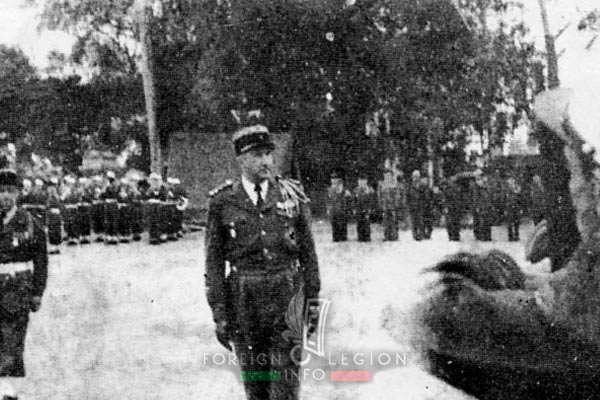
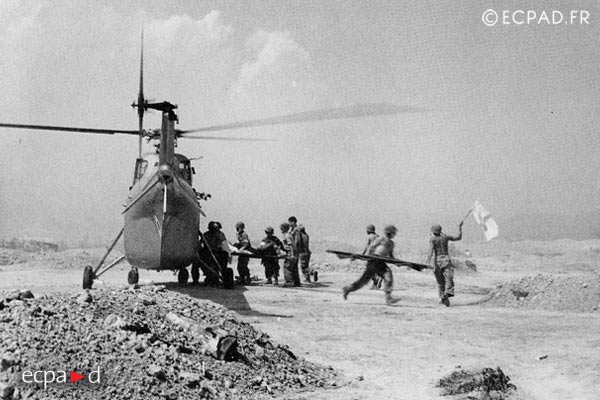

Battle of Dien Bien Phu: Second Offensive
March 30 – April 4, 1954: Battle of Five Hills
On the evening of March 30, the Viet Minh launched their second offensive, conducted from two directions: an attack on the hills in the east — on Dominique 1 and 2, and Eliane 1 and 2 — and another on Huguette 7 in the northwest. Each attack was carried out by a Viet Minh division.
Loss of Dominique 1 and 2. The offensive began at 5:00 PM (17:00) with artillery shelling and a Viet Minh ground assault to follow (Division 312). Fortified positions Dominique 1 and 2 were occupied by an Algerian battalion (III/3e RTA) with a company of the 5e BPVN (Vietnamese paratroopers) on route to reinforce them. A platoon of the 1re CMMLE was stationed at Dominique 1, led by Lieutenant Colcy. The 1re CMMLE mortar platoon fought to the last man, but could not hold out. Lieutenant Colcy was killed and his platoon annihilated. Both Dominique positions were quickly seized by the Viet Minh.
Loss of Eliane 1. At the same time, another Viet Minh division — the 316th — attacked Eliane 1 and 2 (Eliane 4 wasn’t ultimately affected), both occupied by a Moroccan battalion (I/4e RTM). Eliane 1 was quickly abandoned by the Moroccans and seized by the Viet Minh.
Battle of Eliane 2. Eliane 2, also under heavy attack, was held first by the Moroccans, replaced then by the 1st Company, 1er BEP under Lieutenant Luciani. The 1er BEP legionnaires fought fiercely. Having faced an entire regiment (the 98th), they managed to defend the position, but suffered heavy casualties. That night, 16 men from the 1er BEP were killed or went missing; tens of 1er BEP legionnaires were wounded. A platoon of the 1re CEPML was also posted on Eliane, between Eliane 2 and Eliane 4. Led by Lieutenant Bergot, the platoon’s artillery fire supported the defenders.
Followed a series of severe Viet Minh attacks on Eliane 2, accompanied by persistent heavy shelling. The fierce battle lasted 107 hours without interruption, and involved 1er BEP legionnaires and 6e BPC paratroopers, supported by volunteers from other units – no more than 300 men together against two Viet Minh regiments. However, they were successful it their defensive action, and defended Eliane 2. On April 4, the battle was over.
During the battle, some 1,200 Viet Minh men were killed, and thousands of Viet Minh troops were wounded or went missing. These heavy losses significantly demoralized the Viet Minh. The Division 316 attacking to the east of the camp became paralyzed and had to stop its assaults for the next four weeks.
Many French soldiers were also killed, among them, at least 29 men from the 1er BEP. About 50 legionnaires were wounded.
Attack on Huguette. A severe assault on Huguette was launched at the same time as the Battle of Five Hills. Carried out by the Division 308, it was conducted from the northwest, aimed at the outlying fortified positions of Huguette, Huguette 6 and Huguette 7 (formerly Anne-Marie 3 and Anne-Marie 4). Huguette 6 was held by 2e REI legionnaires and Huguette 7 by a 5e BPVN company (the 1st, under Captain Bizard). The fierce battle took all night, but Huguette’s defenders prevailed, and by morning the enemy was fought off (Captain Bizard defended his position brilliantly against an entire regiment, the 88th). However, the Viet Minh would continue attacking them in the days to come.
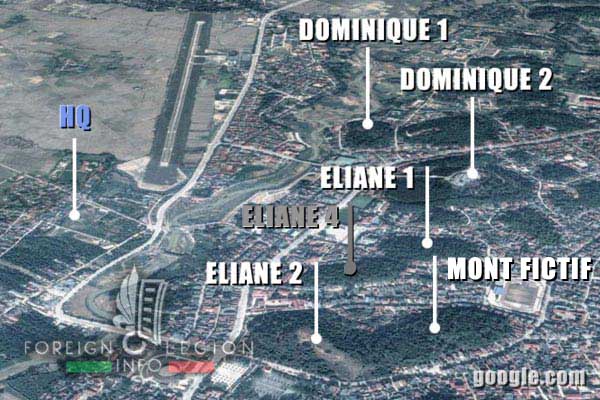

March 31, 1954: Isolation of Isabelle
That day near Isabelle, in the south, clashes with the Viet Minh took place as part of a French offensive. The fighting involved legionnaires from the 3rd Battalion 3e REI, supported by M24 tanks. The purpose of the offensive was to maintain an open path with the French HQ, located 3.5 miles (6 km) north of their defensive position. However, the Viet Minh had already occupied the road, as well as building large trenches there. A fierce battle took place between legionnaires and the Viet Minh. In the battle, the 3e REI suffered heavy casualties. Fifteen men were killed or went missing, and about 50 men were wounded, including Captain Picard. Since that day, Isabelle and the auxiliary airstrip had been cut off from the rest of the French garrison.
April 1-5, 1954: Loss of Francoise and battles at Huguette
April brought reinforcements. On April 1, a French parachute battalion jumped into Dien Bien Phu: the 2nd Battalion 1er RCP, led by Major Bréchignac.
Loss of Francoise. The smallest strongpoint at Dien Bien Phu, Francoise was occupied by Tai auxiliaries. On April 1, scared by a possible Viet Minh attack, the Tai refused to fight and left their strongpoint (like did other Tai auxiliaries at Anne-Marie in mid-March). They were disarmed and imprisoned as deserters inside the camp. The Francoise strongpoint was abolished.
Loss of Huguette 7. Also on April 1, a series of severe Viet Minh attacks began on Huguette 7, a strongpoint occupied by a Legion company of the 2e REI (about 100 men), under Lieutenant Spozio. They faced an entire Viet Minh regiment. The battle was severe and took 36 hours without interruption. At the end of the battle, only 12 combat-ready legionnaires remained. Having run out of ammunition, the last survivors were called off and sent to reinforce Huguette 2. Huguette 7 was seized by the Viet Minh.
Attack on Huguette 6. On the evening of April 4, at Huguette 6, a severe Viet Minh attack began. It was conducted by two Viet Minh regiments (the 141st and 209th). Previously known as Anne-Marie 3, Huguette 6 was the most outlying position after the loss of Huguette 7, and an important strongpoint, protecting the airstrip. It was occupied by less than 250 Legion elements, led by Lieutenant Rastouil. These included volunteers from the 1st Battalion, 2e REI (under Lieutenant Francois), NCO-Candidate corporals from the 13e DBLE (under Lieutenant Philippe), and legionnaires from the 3rd Battalion 13e DBLE – the survivors from Beatrice.
At midnight, an 8e BPC company was sent to support the legionnaires at Huguette 6, along with three M24 Chaffee tanks. The Viet Minh was surprised and withdrew.
In the early hours of April 5, a new Viet Minh attack was launched. Two French companies were sent to support the strongpoint, including French paratroopers from the 8e BPC and 1er RCP. Together, the defenders forced the Viet Minh to withdraw, and Huguette 6 was saved.
In two days, some 800 Viet Minh attackers were killed. The French lost around 200 soldiers, including many legionnaires. A 1er RCP company reinforced the legionnaires on Huguette 6. Two days later, the company would be replaced by a 5e BPVN company.



April 6-18, 1954: Siege of Huguette 6
Siege of Huguette 6. At this time, Huguette 6 was occupied by 2e REI legionnaires, around 100 men led by Lieutenant Rastouil. They were reinforced by a 5e BPVN company (80 men under Captain Bizard). It became necessary to fight fiercely to supply it, as it was surrounded by a web of Viet Minh trenches that isolated the strongpoint from direct support. On April 14, Lieutenant Rastouil was killed, and on April 17, a decision was made to evacuate Huguette 6.
Liliane (Lily). Meanwhile, on April 6, a new strongpoint was created, called Liliane (or Lily). It was a small, auxiliary position, consisting of two strongpoints: Liliane 1 (previously Claudine 1) and Liliane 2. They would be occupied by a 4e RTM Moroccan company. Later, another small fortified position was created there, Liliane 3.
2e BEP jumped over DBP. The 2nd Foreign Parachute Battalion (2e BEP, future 2e REP), led by Major Liesenfelt, jumped over Dien Bien Phu on April 9, giving the French forces another Legion battalion to reinforce the besieged camp. The 2e BEP legionnaires was dropped into the valley in two waves during the nights of April 9-10 and April 10-11. Once at the camp, they would reinforce several strongpoints.
On April 10, one of the 2e BEP companies immediatelly joined the battles. It suffered 12 men killed, including Captain Delafond, its commander. Another 14 men were wounded.
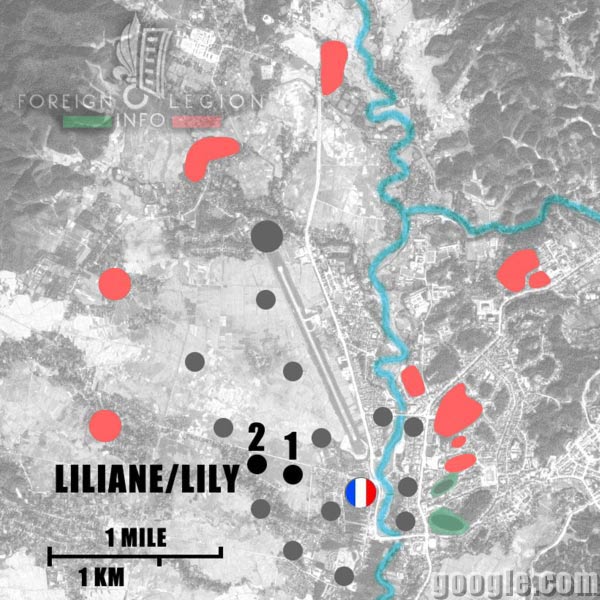
April 10, 1954: Recapture of Eliane 1
Another successful French action in the east was their offensive to recapture Eliane 1, the strongpoint located right opposite Eliane 4. It had been lost on March 30, during the Battle of Five Hills, and the Viet Minh had set up a sniper outpost there. Major Bigeard (6e BPC), whose men had been occupying the Eliane defensive position and threatened by the enemy snipers, decided to retake the strongpoint.
First, the hill was shelled by French artillery, as well as by dropping bombs from aircraft. Thereafter, two 6e BPC companies launched an assault. The already demoralized Viet Minh couldn’t defend it, although their combat-ready battalions carried out several unsuccessful counter-attacks. About 100 legionnaires from the 1er BEP supported the two Bigeard companies, and finally, the Viet Minh had to withdraw. Eliane 1 was successfully recaptured by the French, regardless heavy casualties they had suffered.
To maintain the recaptured hill, other units replaced their comrades: a 1er RCP company and a 1er BEP company (under Lieutenant Martin), then a 2e BEP company (under Captain Delafond, who was killed in the fighting), and in the following days, a company from the 1st Battalion 13e DBLE or a 5e BPVN company. The strongpoint would successfully remain under French control until May 6.
This action confirmed the low morale of the eastern Viet Minh division, showing that even the Viet Minh had their limits. It also confirmed the high level of combat readiness of the French paratroopers.

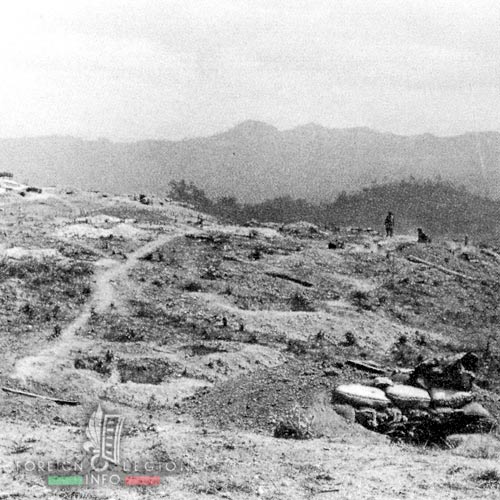
April 11-18, 1954: Opéra and Loss of Huguette 6
Close to Huguette 1, on April 11, an operation was put into place to push back the approaching Viet Minh. It was carried out by Lieutenant Bourges and his 4th Company 2e REI, supported by M24 tanks. A fierce battle ensued and the Viet Minh had to withdraw; however, an entire Legion platoon was lost in the action.
Opéra. On April 12, east of the airstrip, a new, small, auxiliary fortified position began to appear between the Huguette and Dominique strongpoints. Named Opéra, it was occupied by a 5e BPVN company, as well as 13e DBLE elements led by Captain Philippe.
Loss of Huguette 6. On April 18, an order was given to evacuate Huguette 6, the strongpoint which was occupied by 2e REI legionnaires under Lieutenant Francois and reinforced by a 5e BPVN company. The Viet Minh had cut off the strongpoint from the rest of the French garrison since early April, and it was necessary to fight fiercely in order to supply the besieged troops there. This resulted in a serious lack of drinking water. In addition, there were not enough troops to reinforce it sufficiently. Because of that, Huguette 6 was abandoned and then seized by the Viet Minh.
During the evacuation, Lieutenant Francois was killed. Over 100 men had been killed at Huguette 6 since early April. The survivors would be stationed at Opéra.
A day earlier, April 17, two 1er BEP companies and two 8e BPC companies had taken part in a failed attempt to help evacuate Huguette 6. They were to cover their comrades during the evacuation, but were stopped by the Viet Minh. Of these four companies, 17 men were killed and 78 wounded. Among the wounded was Lieutenant Martin from the 1er BEP.
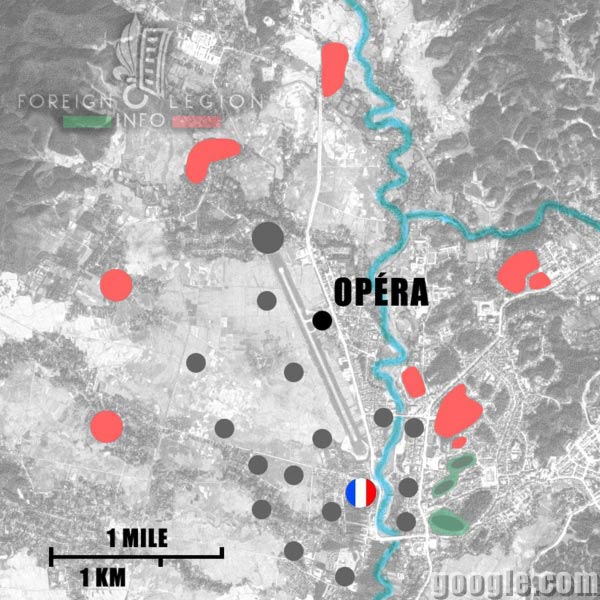


April 19-23, 1954: Loss of Huguette 1
Huguette 1 was, at the time, the most outlying strongpoint (excluding the already isolated Isabelle). Located north of the center, near the airstrip, it was occupied by a 2e REI company under Lieutenant Spozio, who were veterans of the Battle of Huguette 7 in early April. They held Huguette 1 for several days, repulsing the repeated Viet Minh attacks.
On April 19, they were replaced by a 13e DBLE company led by Captain Chevallier. The 13e DBLE company faced great difficulty to reach the strongpoint. Its men fought all night to gain some 330 yards (300 m) of ground. Of the original 120 men, only 80 reached Huguette 1 in combat-ready condition. The rest were killed or wounded during the night and the following morning.
The 2e REI legionnaires left Huguette 1 to join Huguette 3, a strongpoint on the other side of the airstrip, close to the HQ. During their journey, many of them were killed or wounded too.
Huguette 1 was again attacked by a Viet Minh regiment. Captain Chevallier and his 80 legionnaires fought bravely, but the Viet Minh isolated the strongpoint from support, and it was surrounded by a web of Viet Minh trenches.
When Captain Chevallier was informed about the situation, he and his men decided to “make Camerone,” which in Legion jargon stood for fighting to the finish, to the last man, following the example of heroes of the 1863 Battle of Camerone.
On April 20, about 3,000 hand grenades were used by them to stop the Viet Minh. By April 21, only 50 legionnaires remained to defend Huguette 1. The Viet Minh were everywhere. Captain Chevallier therefore asked artillery to directly shell his strongpoint, and on April 22, his radio went silent. He and his men were all killed, and Huguette 1 was seized by the Viet Minh.
Airstrip cut in two. On April 22, the main airstrip/runway was cut in two when the Viet Minh made a trench there.
Counter-attack on Huguette 1. On April 23, an attempt was made to recapture Huguette 1. The 2e BEP, a fresh reserve unit of 380 men led by Major Liesenfelt, was assigned to carry out the assault. The fighting began with a French airborne attack and heavy shelling by artillery, with the ground assault to follow. However, Major Liesenfelt delayed the attack and the Viet Minh got a chance to recover and prepare themselves.
Two 2e BEP companies then attacked Huguette 1 from Opéra. They suffered heavy casualties (80% of their strength), and when they asked for help, nobody would respond. Their Major’s radio was blocked and he didn’t check it out. Another two companies tried to attack, but they were stopped by intense machine-gun fire.
Lieutenant Jean Garin, wounded at the airstrip, killed himself during the counter-attack. A platoon leader with the 8th Company 2e BEP, his legs had been seriously injured and he could no longer fight. Two legionnaires had already died trying to save their leader, and he didn’t want to see other legionnaires risk their lives for him.
Finally, newly-promoted Lt. Col. Bigeard (6e BPC) called off the assault. This action ended the battles of the three Huguettes: Huguette 7, Huguette 6, and Huguette 1 were all lost.
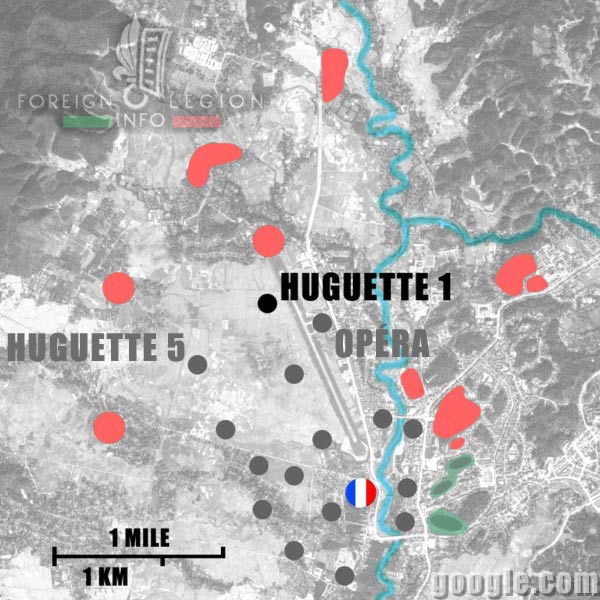
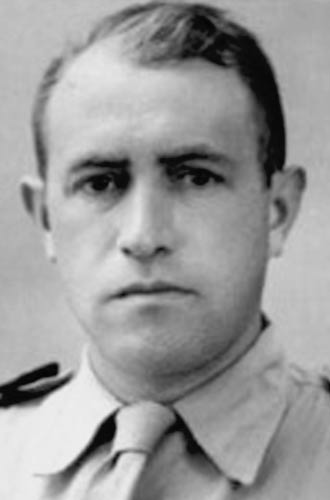

April 24-30, 1954: Relative calm
On April 24, the Provisional Foreign Parachute Battalion (Bataillon de Marche Etranger de Parachutistes, BMEP) was created. It consisted of 1er BEP and 2e BEP survivors. The two units, both devastated, now merged together. The new unit was composed of four companies under Lieutenant De Stabenrath and Captain Brandon (ex-1er BEP) and Lieutenant Le Cour Grandmaison and Lieutenant Pétré (ex-2e BEP). Major Maurice Giraud from the 1er BEP took command. The BMEP would be posted at the strongpoints Huguette 4 and Huguette 5.
Loss of Opéra. Also that day, an order was given to evacuate Opéra, the small fortified position, freshly created. It was occupied by a 5e BPVN company. The evacuation was caused by the loss of Huguette 1. Opéra was seized by the Viet Minh the following day.
For a period of in late April, the Viet Minh stopped their assaults. They had suffered heavy casualties to seize the three Huguettes, losing over 6,000 men there, while the French lost some 700 men.
New reinforcements. During that week, tens of volunteers jumped over Dien Bien Phu. Many of them were legionnaires from the different units that were stationed in Indochina at the time. The majority of the men just received a parachute to jump and didn’t pass any training. They were true volunteers, wanting only to support their comrades.
Many volunteers also jumped over Dien Bien Phu from March-May. Unfortunately, a number of them landed behind enemy lines, where they would be killed or imprisoned without firing a shot.
Clashes near Huguette 4. On April 28, the tentative calm was broken by clashes with the Viet Minh near Huguette 4. BMEP legionnaires, led by Captain Luciani, got involved in fighting when they surprised approaching Viet Minh groups. Twenty Viet Minh men would be killed.
Camerone Day. In the valley on April 30, most of the men celebrated their last Camerone Day, a holiday for legionnaires which marked the 1863 Battle of Camerone.
Battle of Dien Bien Phu: Third (Final) Offensive
May 1, 1954: Viet Minh’s Third Offensive started
On the evening of May 1, the Viet Minh launched their final offensive, which was again conducted from two directions, the east and the northwest. An attack was made on the Eliane positions in the east, and another on Huguette 5 in the northwest. The attacks were carried out by three Viet Minh divisions.
Attack on Eliane 1 and 2. A large attack, conducted by two Viet Minh divisions, was aimed at strongpoints Eliane 1 and Eliane 2. It began at 5:00 PM (17:00) with intense artillery shelling which took several hours. A ground assault followed. Eliane 1 was held by two 1er RCP companies, and Eliane 2 was held by two (or three) 13e DBLE companies under Major Coutant. The heavy fighting took all night, but both Eliane 1 and Eliane 2 fought off the attack.
Battle of Huguette 5. Another Viet Minh division conducted a large offensive aimed at the western strongpoint Huguette 5, held by a single company of BMEP legionnaires, about 120 men under Lieutenant De Stabenrath. The battle again began at 5:00 PM (17:00) with artillery shelling and a Viet Minh ground assault to follow. Like the attack on the two Elianes, the fighting was severe and took all night. The Viet Minh attacks were followed by counter-attacks, and the battle finished at 10:00 AM (10:00). The BMEP company successfully fought off the attacks and defended Huguette 5, but it suffered 12 legionnaires killed and 68 wounded.
May 2, 1954: Loss of Eliane 1, Dominique 3, Huguette 5
Loss of Eliane 1. On the evening of May 2, the Viet Minh launched an assault on Eliane 1, which was held by two 1er RCP companies. The position was reinforced by a third company from the 1er RCP, but all three companies were annihilated. At 11:00 PM (23:00), the radio went silent, and Eliane 1 was seized by the Viet Minh.
Loss of Dominique 3. Dominique 3 was the last remaining fortified position of the Dominique strongpoint by this time. It was composed of two small outposts, held by Algerian companies and supported by elements from the 6e BPC and the BT2 (Tai auxiliaries). That evening, a direct Viet Minh assault was launched against them. The defenders faced two Viet Minh battalions. They resisted the attackers for some time, but ultimately, the strongpoint was overrun and Dominique 3 was also seized by the Viet Minh.
Loss of Huguette 5. Huguette 5 was held by a BMEP company (under Lieutenant De Stabenrath) which was considerably reduced by the fierce battle from the previous day. Three platoons of 10 men each remained, led by Lieutenant Boisbouvier, Master Sergeant Zurell, and Sergeant Novak. They were facing hundreds of Viet Minh fighters from the Regiments 36 and 102. On the evening of May 2, a severe battle started between the two sides, and by 3:30 AM (03:30) on May 3, only three defenders were left. Lieutenant Boisbouvier had been killed outright; Lieutenant De Stabenrath was badly wounded and died a week later. Sergeant Novak and two legionnaires were the only combat-ready survivors. They were called off and Huguette 5 was seized by the Viet Minh.
Novak himself would be killed in Algeria in 1958. At the time, he was a platoon leader with the 2nd Company, 2e REP.

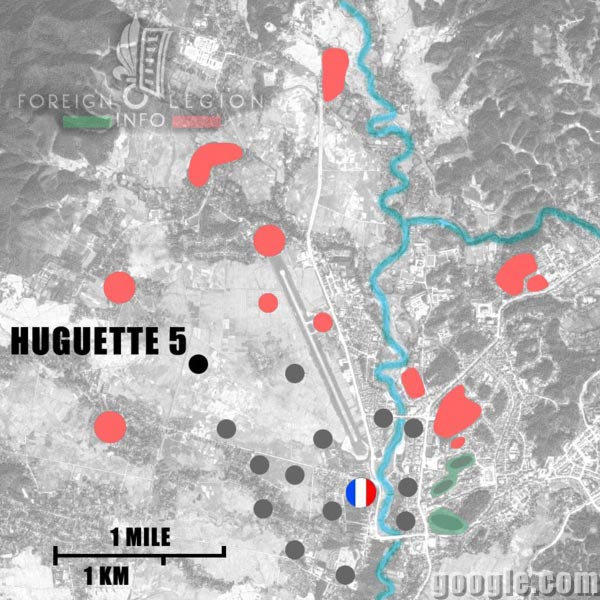
May 3-6, 1954: Loss of Huguette 4 and last reinforcements
New reinforcements. During the night of May 2-3, another French parachute company jumped over Dien Bien Phu. This was the 2nd Company 1er BPC, led by Captain Edme. The company was posted at Eliane 2, where they reinforced the 13e DBLE legionnaires under Major Coutant.
On the night of May 3-4, the 3rd Company 1er BPC also jumped into Dien Bien Phu under cover of darkness. They were led by Captain Pouget and reinforced their colleagues at Eliane 2, to replace the 13e DBLE legionnaires there. Major Coutant and his men withdrew and moved to Eliane 3, which was used as a rear base for the Eliane strongpoint.
Loss of Huguette 4. Huguette 4 was held by BMEP legionnaires (under Captain Luciani) as well as Moroccans (most likely from the 4e RTM). These constituted no more than 220 men together. At 12:30 PM (00:30), May 4, an intense battle started when the Viet Minh launched one of the heaviest assaults yet. The defenders faced an entire Viet Minh regiment. Waves of the Viet Minh were attacking their position. Three hours later, the defenders were overrun and Huguette 4 was seized by the Viet Minh.
Last reinforcements. During the night of May 4-5, new reinforcements arrived when another 1er BPC company jumped over Dien Bien Phu, led by Captain Tréhiou. During the night of May 5-6, some 90 more paratroopers from the 1er BPC jumped over Dien Bien Phu. They were the last reinforcements that the French garrison would receive.
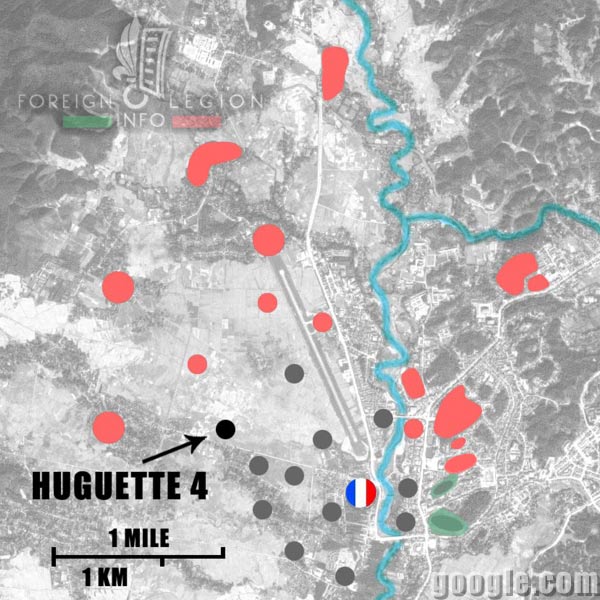
May 6-7, 1954: Final assault
On May 6, the entire camp was shelled. At noon, the Viet Minh started to use Katyusha, a Soviet Union multiple rocket launcher. The new weapon began destroying the strongpoints.
Loss of Eliane 2. Eliane 2 was probably the most important French defensive position at Dien Bien Phu. The attackers had been trying to seize it for over a month, with the defenders resisting since the Battle of Five Hills in late March. At 6:45 PM (18:45), May 6, an entire regiment of the Viet Minh launched another assault on it. At this time it was held by the two 1er BPC companies, led by Captain Pouget. They were the last reinforcements dropped into the valley. The French paratroopers repulsed the attack, and over 200 attackers were immediately killed. The Viet Minh stopped their assault, but the position would be shelled again.
At around 10:00 PM (22:00), Eliane 2 was blown up. The Viet Minh dug a tunnel through the hill and filled it with 2,200 pounds (1,000 kg) of explosives, which destroyed the French command bunker. Less than 40 paratroopers survived the massive explosion. Among the survivors was Captain Pouget. He and his men would fight for another five hours, but around 3:00 AM (03:00) on May 7, the position was overrun. Eliane 2 was finally seized by the Viet Minh.
Loss of Claudine 5. On the evening of May 6, Claudine 5 came under attack. A fortified position in the west of the French camp, it was held by legionnaires from the 2nd Company 2e REI, led by Captain Schmitz. The intense Viet Minh assault would take three hours, but the legionnaires, supported by the survivors from the 3rd Battalion 13e DBLE, were initially able to fight off the attackers. Nevertheless, they wouldn’t survive the second assault. At 2:00 AM (02:00) on May 7, Claudine 5 was overrun, and also seized by the Viet Minh.
Loss of Eliane 4 and 10. At 10:00 PM (22:00), May 6, the Viet Minh launched an assault aimed at Eliane 4, the last French hill, held by the 5e BPVN Vietnamese and paratroopers from the 1er RCP. Later that night, it would be reinforced by 8e BPC paratroopers, as well as two BMEP companies (some 150 men together, led by Lieutenant Brandon and Lieutenant Le Cour Grandmaison). The defenders faced a Viet Minh regiment.
At the same time, an assault was aimed at Eliane 10, located between Eliane 4 and the Nam Youm river. Eliane 10 was held by Moroccans and Tai auxiliaries from BT2 under Major Chenel, a former Legion officer. Like Lt. Col. Gaucher, Chenel was one of the 5e REI survivors from 1945. Nicknamed Zatopek, he would command the 2e REP from 1961-63.
Eliane 10 was reinforced by 6e BPC paratroopers, as the heavy fighting took many hours. For a time, Eliane 4 and Eliane 10 managed to repulse all attacks. At 5:30 AM (05:30) in the morning, the Viet Minh suspended their actions, but an hour later, they launched new assaults. Their attacks would continue for the next three hours. Between 9:00-9:30 AM (09:00-09:30) on May 7, Eliane 4 and Eliane 10 were overrun, and both seized by the Viet Minh.
Loss of Eliane 3, 11 and 12. Eliane 3, 11 and 12 were all defensive positions located alongside the Nam Youm river. Eliane 3 was one of the original strongpoints at Dien Bien Phu, held by legionnaires from the 1st Battalion, 13e DBLE and Moroccans (the 4e RTM). It protected a road to the French HQ, crossing the river, as well as access to the two newer strongpoints. It also served as a rear base for all of Eliane. Eliane 11 and 12 were held by a variety of French troops, including the 6e BPC, Algerians, and Tai auxiliaries from Major Chenel’s BT2.
Defenders at Eliane 3 saw approaching Viet Minh troops. In the afternoon, the 13e DBLE legionnaires were called off and left the position to protect the HQ. Shortly afterward, at 3:00 PM (15:00) on May 7, the Moroccans surrendered. Eliane 11 and Eliane 12 were left exposed and would resist for only an hour more. At 4:00 PM (16:00), they were overrun. Eliane 3, 11 and 12 were all seized by the Viet Minh.
The loss of the defensive position Eliane ended the Battle of Dien Bien Phu.
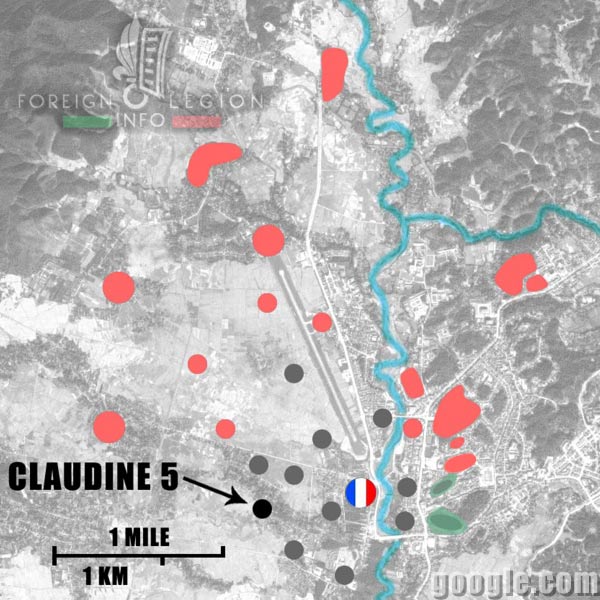
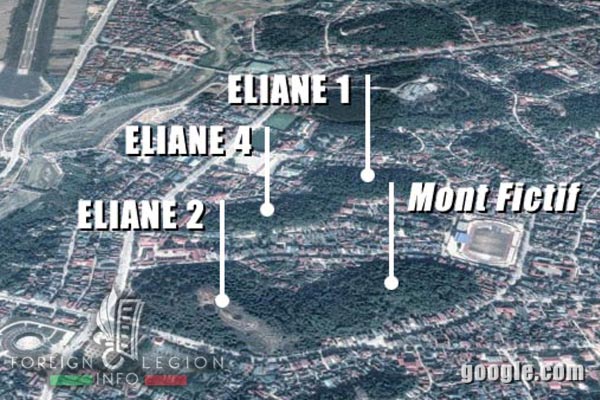


Battle of Dien Bien Phu: Ceasefire
On May 7, a decision was made by the French command to hold talks with General Giap. A ceasefire was arranged. At 4:30 PM (16:30), the strongpoints were informed about it, and at 5:00 PM (17:00), an order was given to destroy their heavy weapons. At 5:40 PM (17:40), a red Viet Minh flag was raised over the French camp. However, the white flag was never raised. Officially, the French didn’t surrender…
At 6:30 PM (18:30), the last legionnaires would lay down their rifles. The 56-day battle was over.
At the time of the ceasefire, several strongpoints were still being held at the main camp:
- Claudine (the GONO HQ and a field hospital, held by 1st Battalion, 2e REI men and a platoon of the 3rd Battalion, 13e DBLE)
- Epervier (previously Dominique 4; held by ???)
- Huguette (held by BMEP legionnaires)
- Junon (a new strongpoint protecting the HQ from the south, held by the 1st Battalion, 13e DBLE)
- Liliane (held by 1st Battalion, 2e REI men)
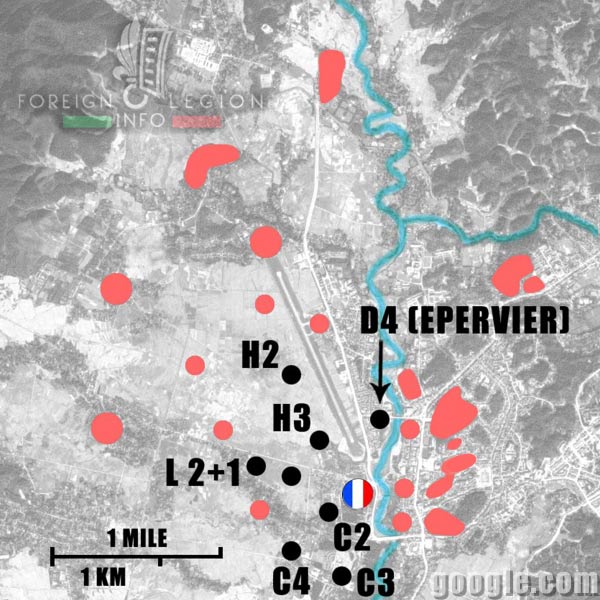
Battle of Dien Bien Phu: End of Isabelle
Isabelle was the only strongpoint in the Southern Sector of the valley, located close to a small village, Hong Cum. It was 3.5 miles (6 km) from the HQ. Commanded by Lieutenant Colonel Lalande from the 3e REI, the strongpoint was composed of five fortified positions. Four of them were placed inside a natural bend of the Nam Youm river. The fifth was located across the river, near the auxiliary airstrip. Isabelle was held by 3rd Battalion 3e REI (Major Grand d’Esnon), as well as a Moroccan battalion, a French artillery battery, Tai auxiliaries, and a tank platoon. This totaled about 1,500-2,000 men and logistics personnel. Since late March, Isabelle and the auxiliary airstrip had been cut off from the rest of the French garrison.
On May 1, a fierce battle broke out at the fifth position, near the airstrip. This outpost was occupied by a company of White Tai auxiliaries, who fought fiercely, supported by mortar fire from Isabelle. About 30 of them would be killed, but due to their efforts, the Viet Minh had to withdraw.
On May 7, Isabelle didn’t surrender. Colonel Lalande (promoted to that rank in April) would try to withdraw to the south instead, with a goal of reaching French troops in Laos. He ordered the garrison to form two marching groups, and they would march several miles along the river, with the 10th Company 3e REI (under Captain Marzeau) providing cover fire.
In the early hours of May 8, at 1:30 AM (01:30), the last message came from Isabelle. It informed the French officials that the strongpoint was under attack. Isabelle was then also seized by the Viet Minh.
In the meantime, the two groups were marching to the south, but the vast majority of them wouldn’t reach their goal. On their way to the edge of the valley, they met enemy units, resulting in clashes between the legionnaires and the Viet Minh. Between May 8-9, two-thirds of the groups would be killed or imprisoned. The 10th Company, which had been covering the withdrawal, was also decimated and had only 30 survivors. Only a few of small groups or individuals would ultimately survive in the jungle and reach French positions.

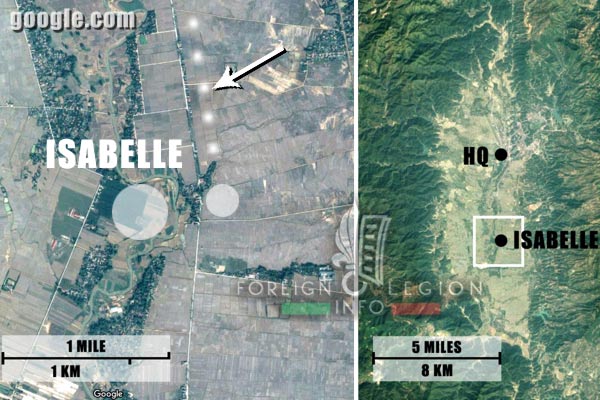


Battle of Dien Bien Phu: Aftermath
French troops. Up to 14,000 French troops participated in the battle, including 3,200-3,800 men who belonged to the Foreign Legion. Up to 2,300 French troops are known to have been killed, including many legionnaires.
More than 11,700 French troops went missing or were imprisoned. Among the imprisoned were 5,200 wounded. Almost 860 badly wounded men would be evacuated by the Red Cross. The prisoners had to cover some 380 miles (over 600 km) on foot in 40 days, including the wounded who had not been evacuated. Many of them wouldn’t survive the punitive march. The remaining prisoners spent several months in the Viet Minh POW camps, and only 3,290 men would survive the imprisonment and be liberated.
The Foreign Legion units lost during the battle:
- 1st Foreign Parachute Battalion (1er BEP)
- 2nd Foreign Parachute Battalion (2e BEP)
- 1st Battalion, 13e DBLE
- 3rd Battalion, 13e DBLE
- 1st Battalion, 2e REI
- 3rd Battalion, 3e REI
- 1st Foreign Heavy Mortar Parachute Company (1re CEPML)
- 1st Foreign Legion Mortar Mixed Company (1re CMMLE)
- 2nd Foreign Legion Mortar Mixed Company (2e CMMLE)
- 2nd Platoon, 5e CMRLE
The 1re CEPML, 1re CMMLE, and 2e CMMLE would never be recreated.
Viet Minh troops. At least 55,000 Viet Minh troops participated in the battle, according to both French and Viet Minh sources. In France, over 20,000 Viet Minh men are estimated to have been lost at Dien Bien Phu. The Viet Minh officially admitted that the movement lost 14,000 of its troops there.
1954 Geneva Conference. From April 26 to July 20, 1954, a conference was held in Geneva, Switzerland to settle the conflict in Indochina. It was attended by France, the Viet Minh, the USSR, China, USA, and the United Kingdom. The Viet Minh and their supporters capitalized on the Battle of Dien Bien Phu, using it as a strong argument for their side during the conference. The negotiations resulted in the end of the Indochina war.
The war officially came to an end between July and August 1954. Vietnam would be cut in two at the 17th parallel. The Viet Minh officially took control of North Vietnam (formerly Tonkin), and the French would have to leave it. French Union forces would regroup south of the line.
However, in 1956, the last French troops (including the 5e REI legionnaires) had to leave the rest of Vietnam. They left Indochina after almost 100 years of their presence there.
Battle of Dien Bien Phu: Additional Images
Some additional images illustrating the decisive battle of the First Indochina War.
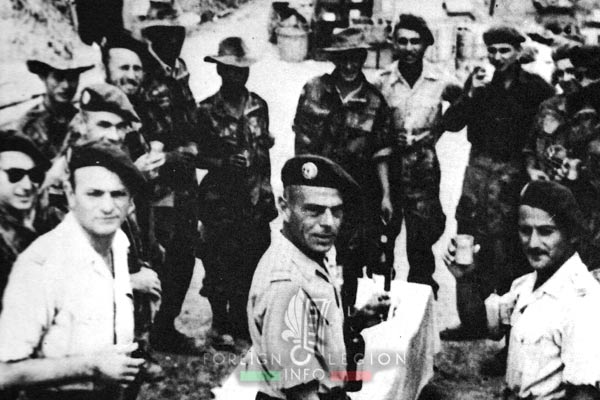

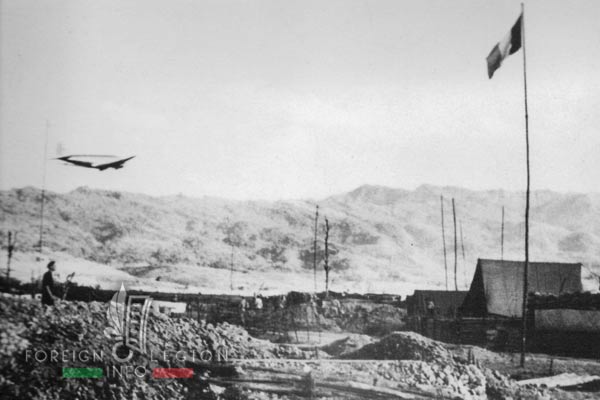
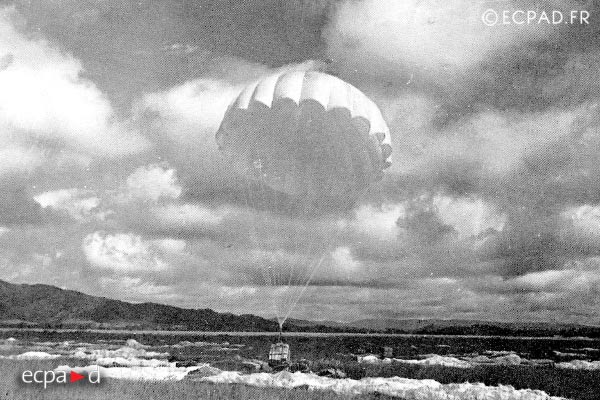


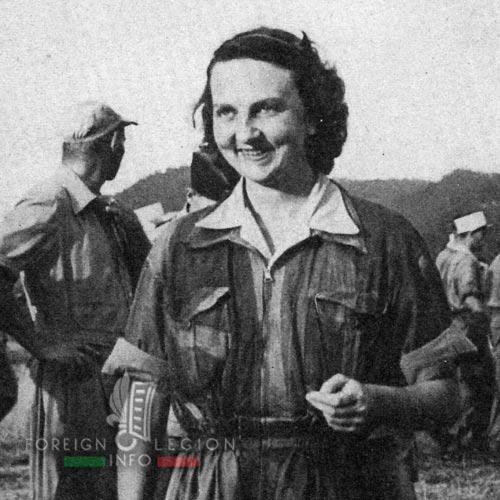
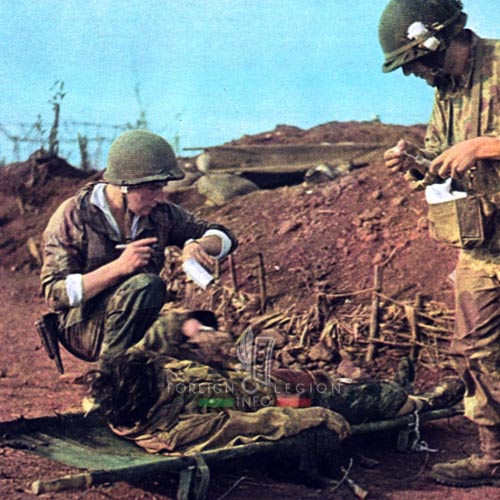
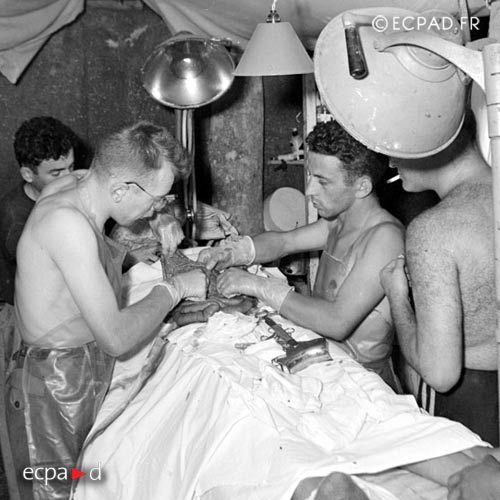

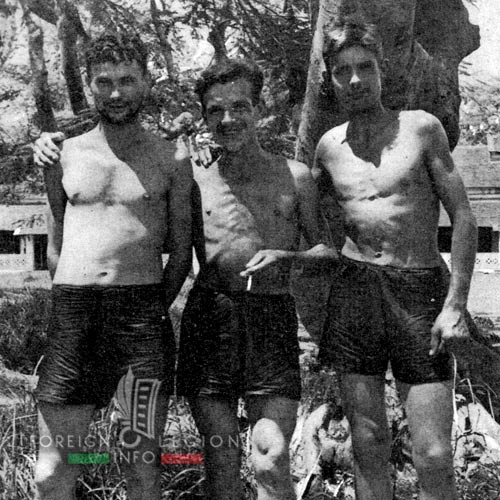

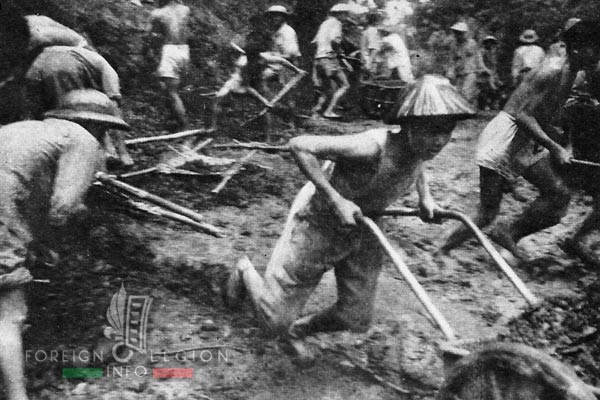
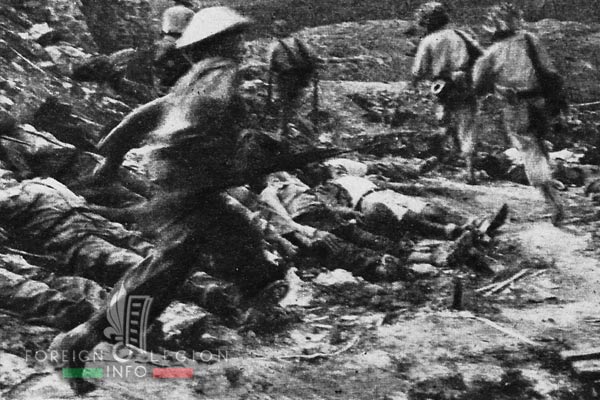


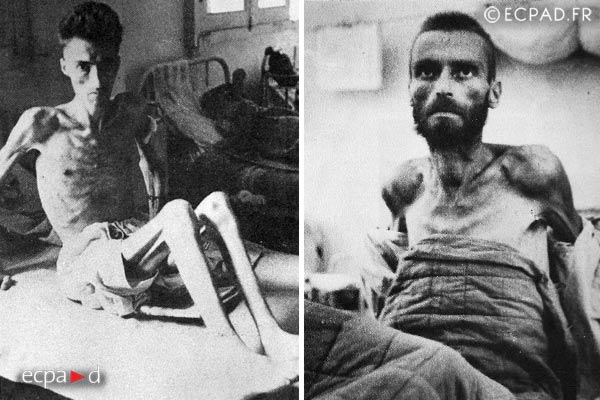
Battle of Dien Bien Phu: French War Memorial
In the 1980s, a small French war memorial was built in the Dien Bien Phu valley. In 1992, the memorial was found unkempt and in ruins by a former legionnaire, Rolf Rodel. Having joined the Legion in 1950, Staff Sergeant Rolf Rodel served as a commando leader with the 10th Company, 3rd Battalion, 3e REI at Isabelle in 1954. Wounded four times during the decisive battle and imprisoned by the Viet Minh, this German legionnaire returned to the site to refresh his memories. He rebuilt the small memorial on his own, in eight days.
Rolf Rodel returned to Vietnam two years later, in 1994. He bought a small piece of land and built a new war memorial from the ground up, to commemorate the French soldiers fallen at Dien Bien Phu with dignity. After two months (February-April), the work was finished. It took another year before French officials would consider covering his expenses and taking care of the new memorial. However, the monument was officially inaugurated as late as 1999, five years after its construction. Unfortunately, Rolf Rodel didn’t live to see it. He died on January 5, 1999.



———

You can support this website at any time through our store. Thank you.
EU-based readers can visit our EU-based shop, to avoid import charges.
—
Main image sources:
ECPAD (Defense audiovisual communication and production unit)
French Ministry of Defense
Main information sources:
Erwan Bergot: Dien Bien Phu (Presses de la Cité, 1989)
More Majorum (German legionnaires in Indochina)
The Battle of Dien Bien Phu (in English)
FSALE (in French)
ECPAD
wikipedia.org
—
More about the history of the Foreign Legion:
1863 Battle of Camerone
1908 Forthassa Disaster
Foreign Legion in the Balkans: 1915-1919
1932 Turenne Rail Accident
1976 Loyada Hostage Rescue Mission
1976 Djibouti helicopter crash
1978 Battle of Kolwezi
1982 Mont Garbi Accident
—
The page was updated on: May 10, 2024
